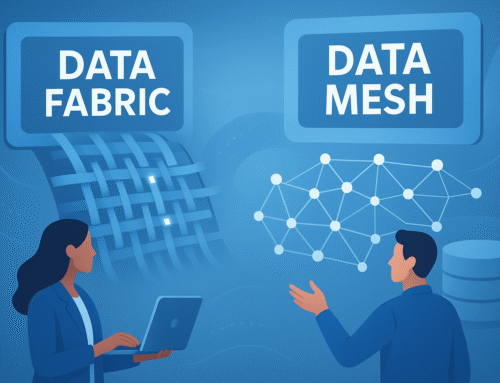In the globalized environment, cybersecurity has ceased to be a technical issue and has taken a global priority. Cybercriminals become smarter, faster and more resourceful with each elapsing year. And in 2025, we have entered the turn taking point: artificial intelligence (AI) is combating artificial intelligence on the digital battlefield.
Yes—you read that right. Attackers are now using the technology that was created to defend us against them. The result? There will be a high-stakes game of cat and mouse between AI-based security systems and AI-based cyber threats.
But what does it imply to businesses, governments and individuals? It is time to jump into the future of cybersecurity in 2025 and see how this AI vs AI era is defining the digital world.
The reason why AI has become the center of cybersecurity.
Conventional cybersecurity was very much human-intensive with security analysts scanning networks, detecting anomalies and reacting to any perceived threats. In 2025, however, the number and complexity of cyberattacks are so immense that this method is no longer possible.
Cyber threats today include:
Ransomware virus that infects within seconds.
AIs create phishing fraud emails that are 100 percent realistic.
Deepfake videos of CEOs in order to grant financial transfers.
Malware which is automated and changes its behavior to avoid being detected.
There was no way that a human team would be able to keep up. Get into AI-enhanced cybersecurity.
AI systems are capable of processing data in lightning speed, spotting anomalies that a human is likely to overlook and reacting immediately to eliminate an attack. Actually, AI has become the initial defense against cybercrime by many companies.
AI as the Defender: More responsible, wiser and quicker.
The AI-enabled tools of cybersecurity of 2025 are more than the conventional firewalls and anti-virus software. They:
Detect threats in real time
Machine learning systems are constantly processing billions of pieces of data such as network traffic, login attempts, and user behavior. In case of an appearance of something suspicious, the system blocks or flags it immediately.
Automate responses
Rather than responding to AI teams, infected machines can be isolated, compromised accounts can be closed, and even ransomware encryption can be automatically reversed by AI tools.
Predict future attacks
Through examining worldwide trends in cyberattacks, AI systems can predict the next activity that attackers may attempt to engage in, and organizations have time to prepare beforehand.
Personalize protection
AI is tailored to the individual requirements of any business or user. It knows what normal activity is and only when something deviates out of the pattern raises an alarm.
This kind of defense has rendered AI a tool that cybersecurity personnel globally cannot do without.
AI as the Hacker: The Evil of Innovation.
Regrettably, what has made AI such a great defender is the same thing that has turned it into a deadly weapon in the wrong hands. AI is now being used by cybercriminals to:
Starter phishing attacks are smarter.
Rather than the typical scam emails, AI is capable of writing very personalized messages based on real-time data that is scraped by social media and they are nearly impossible to detect.
Avoid the conventional defense mechanisms.
There is a continuous development of AI-powered malware that learns how to evade the antivirus software.
Create deepfake content
Employees are being manipulated, misinformed or even extorted through fake audio and video clips.
Automate massive attacks.
Hackers no longer have to take days to think over it, AI systems can coordinate and execute global cyberattacks in minutes.
Such emergence of AI-powered cybercrime is what is causing 2025 to be called the AI vs AI battlefield, since it is only as intelligent as defense systems that can respond to these next-generation attacks.
Cybersecurity Battlefield of 2025: AI vs AI.
We can consider a practical situation:
An artificial intelligent algorithm allows a hacker to target thousands of employees with spear-phishing emails but tailor each email to reflect the communication style of their boss.
Meanwhile, the malware powered by AI evolves to evade the detection of the conventional firewalls.
In the other side, the AI security system in the company will instantly scan the email metadata, identify suspicious activities and block the messages before employees even open them.
Such is the future of 2025: AI on the attack vs AI on defense–the battle of the microsecond.
It will all hinge on what smarter, faster and more adaptable AI model belongs to.
Key Cybersecurity Trends in 2025
The following are some of the key trends that will have a significant impact on the cybersecurity environment this year:
1. Zero-Trust Architecture becomes the New Standard.
Days when it was possible to trust employees within a company network are gone. Zero-trust systems of 2025 will authenticate all users, systems, and applications both within and without the network.
2. Threat Intelligence, Powered by AI.
Businesses are consolidating information in the world. The shared AI-powered threat intelligence services can enable organizations to identify and deal with cyberattacks in time before they propagate.
3. Quantum Computing Risks
Quantum computing is set to revolutionize medicine and science, but it is also an enormous cybersecurity threat. The conventional encryption algorithms will cease existence, and cybersecurity specialists will need to come up with quantum-safe encryption.
4. The emergence of Cybersecurity Insurance.
As the AI-based attacks increase, the number of companies insuring against cybercrimes is on the rise. Insurers have changed their policy to demand evidence of AI-powered defenses to provide cover.
5. Regulations and Ethical AI
Governments all over the world are becoming stricter in law enforcement points towards cybersecurity. It is not just that companies need to protect data but they also need to make their AI models ethical, transparent, and bias-free.
Human Side of AI Cybersecurity.
As much as AI takes the centre stage, the human factor still plays a key role. AI can identify and react to threats, but it lacks the human ability to think critically, make an ethical decision, and plan.
Indeed, among the most demanded will be:
AI cybersecurity analysts
Ethical hackers
Response experts.
Cyber risk strategists
The cooperation of humans and AI can guarantee an active defense system in balance.
How Companies can remain on top in 2025.
In the case of the businesses, remaining safe in 2025 implies not only adopting AI-based cybersecurity but also enhancing human intelligence. The following are some of the practical steps:
Invest in AI-based defense tools – Suspicion and automated response of threats in real-time is non-negotiable.
Implement a zero-trust architecture – Do not trust anyone till proven.
Train employees -The greatest vulnerability is still human error. Constant publicity is essential.
Take advantage of multi-layered security – use AI together with firewalls, encryption, and endpoint security.
Be vigilant- Adhere to new data security and AI ethical rules.
Plan worst case scenario – Develop incident response plans and purchase cyber insurance.
Final Thoughts:
The Future Is an AI Arms Race Learn More about the future of A.I. PopSci In 2012, in what he later described as a turning point, Geoff Hinton began working on softening and sharpening neural networks with complex math models known as “random thinned out ensembles.”
An attacker who had purchased powerful AI could hack up to 100% of any AI-defended system and require no additional protection or cleanup costs for that hack. Artificial intelligence is being deployed on both sides, and the lead swings almost daily.
The message for organizations is stark: innovate or come crashing down. By blending AI at its best with human intellect and moral responsibility we can remain ahead in this digital battleground.
No one has a crystal ball on what cybersecurity will look like tomorrow, but this much is certain: In the new digital world, AI will shape winners and losers.


Leave A Comment